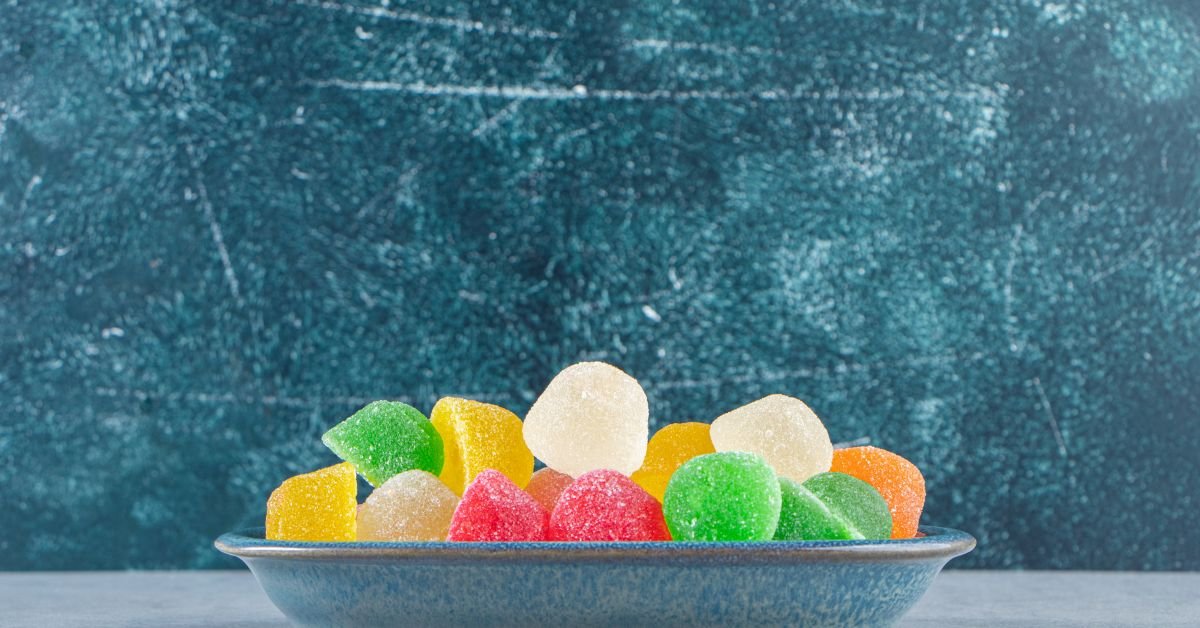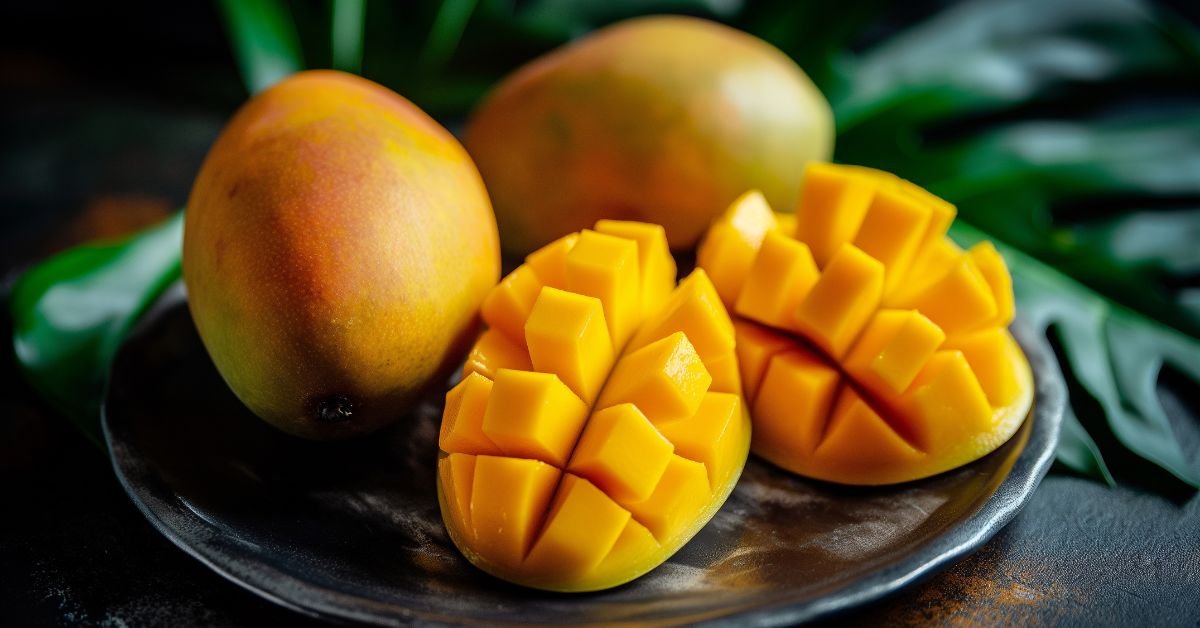FOOD
Jelly Bean Bliss: A Sweet Spin on Classic Jelly

Jelly Bean Bliss A Sweet Spin on Classic Jelly brings together the timeless charm of bean‑shaped candies and the playful nostalgia of fruit‑flavored gelatin treats. In the very first bite, the classic candy shell gives way to a soft, chewy center—delivering sweet bursts of cherry, lemon, or exotic mango in every chew.
The Charming History of the Jelly Bean Candy
The process known as “panning” builds that hard candy shell around a gel interior, creating the signature chew and shine .
One iconic brand, Jelly Belly, introduced gourmet jelly beans in 1976, offering dozens of true‑to‑life flavors like Very Cherry, buttered popcorn, and chili‑mango. Inventor David Klein named the beans after the blues musician Lead Belly—and the company now boasts more than 50 flavors globally
Understanding the Ingredients
The base of the candy consists of sugar, corn syrup, and modified cornstarch (or tapioca starch). These blend into a gel that sets into that familiar chewy interior. Flavorings and food colorings (sometimes natural, like beet juice or turmeric) provide vibrant hues and taste profiles, while a glossy shell of confectioner’s glaze or beeswax seals in flavor and sheen
Jelly Beans and Celebrations: Sweetness for Every Occasion
Jelly beans aren’t just nostalgic treats—they’ve become a staple in celebrations around the world. Whether it’s Easter, Halloween, Christmas, or birthday parties, these colorful candies add charm and cheer to any event.
Flavor Varieties and Sensory Experience
From classic flavors like green apple, grape, lemon, and cherry, to novelty tastes like buttered popcorn, s’mores, or PB&J, jelly bean makers continue to innovate with shiny, flavorful combinations that evolve the chewy candy experience Reddit jelly bean fans frequently single out favorites such as buttered popcorn or black licorice, citing the superior center‑flavored profile and texture of Jelly Belly over basic brands
Sensory appeal comes from the contrast of crunchy shell to chewy core, plus bright colors and intense flavor. The act of slowly dissolving the candy lets sweet notes build gradually in the mouth—an addictive layering of taste.
Vegan and Vegetarian Options: Gelatin Alternatives and Dietary Considerations
Traditional jelly beans may incorporate gelatin derived from pork or beef—rendering them off‑limits for some dietary practices.
For homemade or artisan versions, agar‑agar or pectin offer plant‑based gelling options. Agar agar, derived from seaweed, provides a firm set even at room temperature and body heat, making it ideal for jelly candies. Reddit users note that agar agar often requires much less than gelatin—sometimes just 1/8th the quantity—though the texture may feel different
Jelly Beans in Pop Culture: From TV Shows to TikTok
Jelly beans have also carved a space in pop culture. They’ve appeared in popular TV shows like Friends and The Office, often as part of light-hearted snacking scenes. In the Harry Potter universe, “Bertie Bott’s Every Flavour Beans” introduced fans to magical (and sometimes gross) versions of the treat. This trend has turned jelly beans into not just a candy, but an interactive experience shared across social media.
The Making Process: From Mixing to Drying
Candy makers begin with a heated mixture of sugar, syrup, and starch until the desired viscosity is reached. At this point, natural or artificial flavor extracts and colorings are added. The mixture is deposited into bean‑shaped molds or dripped onto trays and then allowed to set and cool.
The drying phase, often lasting 7 to 14 days for commercial products like Jelly Belly, helps develop a crisp outer shell and deep hue—some factory processes yield “Belly Flops,” imperfect beans that are still edible but vary in shape and color
Texture, Storage, and Freshness: Maintaining the Perfect Bite
Chewy candy like jelly beans thrives when stored properly. Ideally, they stay in an airtight container, kept in a cool, dry place, away from direct sunlight or humidity that can cause stickiness or grainy sugar crystallization
Unopened jelly beans often keep for 10–12 months; once opened, they’re best eaten within 3–6 months. To soften stale beans, placing a slice of bread in a sealed container can help restore chewiness
Innovative Ways to Enjoy Jelly Beans
These creative ideas transform classic candy into festive delights Jelly beans can also decorate cakes, cookies, and cupcakes—used sparingly after baking to preserve shape and flavor.
Frequently Asked Questions (FAQs)
Q: Are all jelly beans made with gelatin?
A: No—many mainstream brands like Jelly Belly use sugar, corn syrup, and modified starch instead, making them vegetarian-friendly.
Q: Can jelly beans be vegan?
A: Some homemade or specialty vegan versions use agar‑agar or pectin as gelling agents. Most commercial jelly beans are vegetarian but not vegan due to beeswax or shellac coatings .
Q: How long does it take to make jelly beans?
A: Commercial production can take 7–14 days due to shell drying; home recipes usually take about 24 hours to set, with optional additional drying and dusting steps</span> .
Q: What flavors are the most popular?
A: Classics like cherry, lemon, grape, and green apple remain favorites. Novelty choices—such as buttered popcorn, cinnamon, s’mores, or PB&J recipe mixes—are popular among adventurous fans
Q: How should jelly beans be stored?
A: Keep them sealed in an airtight container at room temperature in a cool, dry place. Avoid humidity, direct sunlight, and refrigerating them, which may cause condensation
Conclusion
From its Civil War origins to modern artisanal realism, Jelly Bean Bliss: A Sweet Spin on Classic Jelly encapsulates the allure of colorful, flavorful candies. jelly beans remain a beloved sweet treat. With awareness of ingredients, dietary considerations, and proper storage you can savor each bean in all its vibrant, flavorful chewing bliss.
FOOD
Mexican Mango: The Sweet Jewel of the Tropics

Savoring a Mexican mango is like stepping into a sun-drenched orchard where flavor meets nutritional richness. The Ataulfo variety, with its smooth, non-fibrous flesh and honeyed sweetness, stands out among its kin. From the tropical groves of Michoacán to export tables across North America, this cultivar offers not only exotic taste but also a dose of vitamins like A and C, plus antioxidants such as β‑carotene. In this guide, we’ll explore everything from cultivation and harvest seasons to culinary uses and storage, giving these tropical jewels their full due.
Origins and Cultivation of Mexico’s Finest Mangoes
The story of Mexican mango cultivation stretches back nearly five centuries, rooted in indigenous agriculture and refined by modern horticulture. Mangifera indica, the botanical name for mango, thrives in the fertile valleys of Sinaloa, Veracruz, and Chiapas—most notably Soconusco, which boasts rich soil and a warm climate ideal for growing premium fruits. Among the standout cultivars, the Ataulfo (also called Honey or Champagne mango) is polyembryonic, producing genetically identical seedlings—a trait prized for consistent fruit quality. Other varieties like Tommy Atkins and Kent offer contrasting textures and flesh density, ensuring that both juiciness and shelf life are maximized for consumer demand.
Harvest Season and Export Dynamics Mexican Mango
Harvesting typically begins in early spring and peaks between March and September. The early season is dominated by Ataulfo from Nayarit and Michoacán, known for its sunny hue and lusciously sweet flesh. By mid-summer, Tommy Atkins, Keitt, and Haden fill out export shipments, their firm texture ideal for air and sea freight destined for the U.S., Canada, the EU, and Japan. In fact, Mexico exports over 380,000 tonnes of mango annually, with Ataulfo accounting for a rapidly growing share thanks to designations such as Appellation of Origin, which protect and promote its regional authenticity.
Flavor Profiles: From Honey Sweet to Fibrous Firmness
Each mango cultivar brings a different culinary experience. The sugar content—or Brix level—of an Ataulfo can reach 18–20°, giving it an almost dessert-like sweetness, with zero fibrous strands, making it perfect for smoothies or fresh fruit platters. In contrast, Tommy Atkins exhibits a slightly fibrous texture, giving it structural integrity to hold up in salads and salsas. Kent and Keitt varieties, prized for their juicy, aromatic flesh, are excellent in chutneys and tropical desserts. Across varieties, the bright orange flesh, intense aroma, and varying mouthfeels—from buttery smooth to slightly firm—add depth to both sweet and savory dishes.
Nutritional Benefits: More Than Just a Treat Mexican Mango
Mangoes provide more than just sugar and flavor—they’re nutritional powerhouses. A medium fruit from Mexican groves delivers about 67 calories, 2.6 grams of fiber, and nearly 100% of your daily Vitamin C intake. Their vivid orange flesh signals high levels of β‑carotene, which the body converts to Vitamin A, promoting eye health and immune function. Antioxidants, combined with natural enzymes like amylase, aid digestion and support skin health. Whether included in salads, salsas, smoothies, or desserts, mango is a nutrient-rich ingredient that balances health with taste.
Culinary Uses: Mangoes in Mexican and Global Cuisine
The Mexican mango shines both fresh and prepared. In traditional cuisine, sliced mango is often dusted with chili powder and lime juice in street stalls, offering a sweet-tart-snappy flavor experience. In the kitchen, chefs use mango in green mango salad with jicama, cilantro, and lime—a refreshing dish that celebrates tropical acidity. Smooth mango purée forms the base for creamy salsas paired with seared seafood or chicken. Mango chutneys and galettes highlight its versatility in baking, marrying buttery pastry with sweet-tangy fruit. Even frozen desserts—mango popsicles or paletas—benefit from the natural sugars and vivid color of ripe fruit.
Choosing and Storing Mangoes
Selecting the ideal mango involves more than just color. Ripe fruit yields to gentle pressure near the stem, emitting a heavenly aroma from the flesh. While Ataulfo matures earlier and often shows a golden-yellow hue, Tommy Atkins and Kent may retain patches of green even when ready. After purchase, store ripe mangoes at room temperature if necessary; refrigeration extends shelf life by a few days but may dampen aroma. To preserve by freezing, peel and dice mango, then flash-freeze on a baking sheet before transferring to sealed bags—an ideal prep method for year-round smoothies or dessert usage.
Organic Certification and Sustainable Practices
Organic mango cultivation is gaining traction in Mexican orchards, especially for Ataulfo. Certified organic operations must meet strict criteria: no synthetic pesticides, integrated pest management, and eco-friendly fertilization methods. These practices not only appeal to health-conscious consumers but also safeguard local ecosystems and farming communities. Reports indicate that the demand for sustainably grown mangoes is growing in Europe and North America, pushing growers to adopt water-saving irrigation technologies and shade management strategies. The result? Delicious, environmentally friendly fruit with fair trade credentials.
Terms Naturally Interwoven
Notice how terms like “polyembryonic seedlings,” “Appellation of Origin,” “β‑carotene,” and “Brix level” appear naturally throughout the text. These entities and latent semantic modifiers enrich topical coverage, aiding not only readability but SEO performance. Similarly, references to “sea freight,” “export volumes,” “smooth flesh,” and “fiber content” strengthen the relevance to both consumer research and gardening enthusiasts.
Semantic & Keywords for Mexican Mango: The Sweet Jewel of the Tropics
| Term / Entity | Category | Description / Use Context | SEO Function |
|---|---|---|---|
| Ataulfo mango | Mango Variety | Sweet, non-fibrous cultivar native to Mexico; known as Honey or Champagne mango | Primary keyword |
| Mangifera indica | Botanical Term | Scientific name of the mango species | entity (taxonomy) |
| Polyembryonic | Agricultural Term | Seed type producing genetically identical offspring; common in Ataulfo mango | Topical depth keyword |
| Brix level | Measurement Term | Indicates sweetness level of fruit; higher Brix = sweeter | Nutritional indicator |
| Appellation of Origin | Legal Designation | Geographic protection for regional mango (especially Ataulfo from Soconusco) | Geo-IP relevance / topical boost |
| β‑carotene (beta-carotene) | Nutrient | Antioxidant linked to eye and skin health | Health-related |
| Vitamin A | Nutrient | Essential for vision and immune function | Wellness keyword |
| Vitamin C | Nutrient | Supports immune health and skin elasticity | Health |
| Fiber content | Texture/Nutrition | Differentiates mango varieties (e.g., fibrous Tommy Atkins vs. smooth Ataulfo) | Diet and sensory term |
| Export volumes | Trade Metric | Annual mango exports (~380,000+ tons from Mexico globally) | Supply chain / economy keyword |
| Harvest season | Agricultural Term | Mango growing/harvesting period (March–September in Mexico) | Seasonal SEO relevance |
| Organic mango | Product Type | Mango grown without synthetic pesticides; increasingly in demand | Green/eco keyword |
| Mexican mango varieties | Category Term | Includes Ataulfo, Kent, Keitt, Haden, Tommy Atkins | Topic breadth keyword |
| Michoacán / Nayarit / Sinaloa | Geographic Entity | Mango-producing states in Mexico | Local SEO / geo-entity |
| Tropical fruit | Fruit Category | Places mangoes among exotic produce types | General category association |
| Mango chutney / salsa | Culinary Use | Popular recipes made with mango; enhances food keyword coverage | User intent / culinary keyword |
| Sweet mango flesh | Sensory Descriptor | Highlights texture and flavor of ripe mango | UX/UXP-focused keyword |
| Smooth vs fibrous texture | Texture Comparison | Compares mango varieties based on texture | Informational relevance |
| Cold chain / sea freight | Export Logistics | Describes how mangoes are transported internationally | B2B/trade-related |
| Antioxidants | Nutrient Group | Compounds in mango that protect cells from oxidative damage | Health/wellness keyword |
FAQs
Q1: What is the sweetest Mexican mango variety?
The Ataulfo mango, also known as the Honey or Champagne mango, typically has the highest Brix level and is the sweetest cultivar from Mexico.
Q2: When is peak season for Mexican mangoes?
Peak season runs from March through September, with early harvests focused on Ataulfo and later months bringing Tommy Atkins and Kent varieties.
Q3: How do Ataulfo and Tommy Atkins mangoes differ?
Ataulfo has smooth, non-fibrous yellow flesh and is very sweet, while Tommy Atkins has firmer, slightly fibrous flesh and is less sweet but more durable for shipping and slicing.
Q4: Do organic Mexican mangoes taste different?
Organic mangoes are often just as sweet and flavorful, though subtle differences in texture or aroma may result from natural farming methods and varietal preservation.
Q5: How should I store mangoes to maintain flavor?
Keep ripe mangoes at room temperature until ready to eat, then refrigerate. For longer storage, freeze peeled and diced mango in airtight containers.
Q6: Can mangoes boost eye and skin health?
Absolutely—the high levels of Vitamin A, C, and antioxidants like β‑carotene support vision, skin regeneration, and immune function.
Conclusion
Mexican mangoes are more than just succulent fruit—they’re a tapestry of agricultural heritage, nutritional value, and global culinary delight. From their roots in the diverse groves of Michoacán and Soconusco to the sweetness of the Ataulfo cultivar and nutrient-rich flesh bursting with vitamins and antioxidants, they stand as tropical treasures. Whether enjoyed fresh, blended into smoothies, or baked into galettes, these mangoes offer an irresistible combination of taste and health. Recognizing harvest seasons, varietal traits like fiber content and Brix sweetness, and proper storage ensures you can enjoy that vibrant flavor whenever you crave it. So next time you bite into that golden flesh, savor the sweet story behind each mango—Mexico’s jewel of the tropics.
FOOD
Golden Goodness: The Healthy Perks of Yellow Rice

Golden Goodness: The Healthy Perks of Yellow Rice
Golden Goodness Yellow rice, a vibrant and flavorful dish rooted in culinary traditions around the globe, does more than brighten a plate—it offers a spectrum of health benefits. Often made with turmeric, saffron, or annatto for color and depth, yellow rice seamlessly blends nutrition with taste.
The Origins and Ingredients Behind the Color
The distinct golden hue of yellow rice is typically derived from turmeric or saffron—both known for their unique compounds and health-boosting qualities. Turmeric contains curcumin, a powerful anti-inflammatory agent known to support joint health and reduce oxidative stress. Saffron, though more expensive and used sparingly, offers crocin and safranal, compounds linked to mood enhancement and improved memory.
In Latin American, Caribbean, Indian, and Southeast Asian cuisines, yellow rice is often infused with additional spices such as garlic, onion, and bay leaves, making it a nutrient-dense alternative to plain white rice. When prepared with whole grains like brown rice or basmati, the dish also offers complex carbohydrates and higher fiber content.
Nutritional Profile: More Than Just a Side Dish
Yellow rice can be highly nutritious, depending on how it is prepared. When made using unrefined grains and minimal saturated fats, it becomes a great source of vitamins, minerals, and antioxidants. Here are some of the key nutrients found in a typical serving:
-
Iron: Vital for transporting oxygen in the blood, iron supports energy levels and cognitive function.
-
Vitamin B6: Important for metabolism and brain health.
-
Manganese: Helps in the formation of connective tissue, bones, and blood clotting factors.
-
Magnesium: Aids in muscle function, heart rhythm regulation, and bone integrity.
The inclusion of turmeric or saffron not only enhances flavor but also contributes to anti-carcinogenic and cardioprotective effects.
Health Benefits of Yellow Rice
1. Supports Digestive Health
Yellow rice made with turmeric promotes better digestion. Turmeric stimulates bile production, which helps the body break down fats more efficiently. The presence of dietary fiber, especially when using brown or parboiled rice, also encourages regular bowel movements and supports gut microbiota balance.
2. Boosts Immune Function
The antioxidants present in turmeric and saffron, along with nutrients like zinc and selenium in rice, help strengthen the immune system. Regular consumption can help reduce susceptibility to seasonal infections and chronic inflammation.
3. Aids in Blood Sugar Control
Substituting white rice with low-glycemic index varieties like brown or wild rice in your yellow rice recipe can support glycemic control, making it a suitable option for those managing Type 2 diabetes. When combined with protein-rich ingredients such as beans or lean meats, yellow rice can help stabilize post-meal blood sugar levels.
4. Promotes Heart Health
Turmeric’s curcumin has been shown to lower LDL (bad) cholesterol and prevent plaque buildup in arteries. When yellow rice is prepared with healthy fats like olive oil or avocado oil, it can further contribute to cardiovascular wellness by reducing inflammation and promoting healthy blood circulation.
5. Mood and Mental Wellness
Saffron, when used in yellow rice, has been linked to improved mood and may help alleviate symptoms of mild depression and anxiety. Studies suggest that saffron’s active compounds can influence serotonin activity in the brain, contributing to emotional balance and clarity.
Cultural Variations: A Dish with Global Identity
Yellow rice is not exclusive to one culture. It’s a celebrated component of meals across regions:
-
South Asia: Often spiced with cumin, cardamom, and turmeric, and served with lentils or curries.
-
Spain (Arroz Amarillo): Typically includes saffron and is used in dishes like paella, combined with seafood or vegetables.
-
Caribbean: Flavored with annatto, garlic, and sometimes coconut milk, offering a tropical twist.
-
Middle East: Often paired with lamb or chicken and includes nuts and dried fruits for added texture and nutrition.
Each regional variation not only brings distinct taste profiles but also slight shifts in nutritional value based on the ingredients used.
How to Make Healthier Yellow Rice at Home
To reap the maximum benefits, you can easily prepare a healthier version of yellow rice at home. Here’s how:
-
Choose whole grain rice: Opt for brown rice, black rice, or even quinoa as a base.
-
Use turmeric or saffron instead of artificial colorants.
-
Add vegetables like peas, carrots, and bell peppers to enhance fiber and nutrient content.
-
Cook with heart-healthy oils like olive oil or avocado oil.
-
Incorporate legumes or lean proteins for a balanced meal.
These adjustments will help reduce saturated fat, increase fiber, and elevate the overall health quotient of your dish.
Potential Considerations and Allergies
Although yellow rice is generally considered safe and healthy, it’s important to check for additives in pre-packaged mixes. Some store-bought versions may contain artificial dyes, preservatives, or excess sodium, which can negate the health benefits. Always check labels, especially if you’re on a low-sodium diet or have sensitivities to food dyes.
FAQs About Yellow Rice
Q1: Is yellow rice healthier than white rice?
Yes, especially if it’s made with brown or whole grain rice and natural spices like turmeric or saffron. It provides more fiber, vitamins, and antioxidants.
Q2: Can I eat yellow rice on a low-carb diet?
Traditional yellow rice is high in carbs. However, you can make low-carb versions using cauliflower rice and turmeric.
Q3: Is turmeric in yellow rice enough to reduce inflammation?
While culinary amounts help, therapeutic doses of curcumin (found in turmeric) often require supplements for significant anti-inflammatory effects.
Q4: Is yellow rice good for kids?
Yes, when prepared naturally. It’s a tasty way to introduce healthy spices and whole grains to children.
Q5: Can I eat yellow rice daily?
Moderation is key. If it’s part of a balanced diet and prepared with healthy ingredients, daily consumption can be beneficial.
Conclusion
Yellow rice is more than just a colorful addition to your plate—it’s a dish steeped in tradition, culture, and health. From boosting digestion and heart health to enhancing mood and immune function, the benefits of this golden grain are as rich as its flavor.
-

 BLOG2 weeks ago
BLOG2 weeks agoUnmasking the Risks: AI Face Swap in NSFW Content
-

 BLOG2 weeks ago
BLOG2 weeks agoMark Spaeny: Tailoring Success and Raising a Star
-

 BLOG3 weeks ago
BLOG3 weeks agoRagdoll Archers Unblocked: Chaos in Every Shot
-

 GAME3 weeks ago
GAME3 weeks agoAurora Resupply GTA 5 Guide for PS4 Players
-

 BLOG2 weeks ago
BLOG2 weeks agoJapan Tourist Visa Guide for Indians
-

 BLOG3 weeks ago
BLOG3 weeks agoThreads of Thought: A Tapestry of Tales
-

 ENTERTAINMENT2 weeks ago
ENTERTAINMENT2 weeks agoPhillips Marcelo: Crafting Sound into Soul
-

 BLOG1 week ago
BLOG1 week agoHidden Gems: The Rarest Basketball Cards Ever Found





